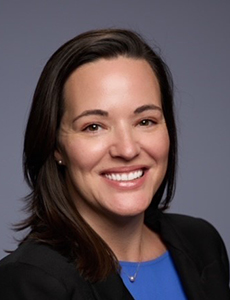The E&S Boom: How Climate Change and Storm Losses Are Changing Insurance

Wood risk has long been difficult to place, said Angelo Ganguzza, vice president and general manager of brokerage operations for Green Tree Risk Partners, a member company of Pennsylvania Lumbermens’ Mutual Insurance Company (PLM), in part because of the nature of the claims. “The niche is a severity-based exposure rather than a frequency one,” he explained.
But difficult doesn’t mean impossible — at least that’s how it was in the past. In recent years, “you could sit down in a room full of reinsurers and talk about insurance and risk and exposures and the minute you mentioned lumber or wood, if you look down and look back up, almost everybody would be gone from the table,” Ganguzza said.
These tough market conditions are familiar to many. Property, liability and other admitted carriers have been tightening capacity in recent years. Much to the delight of Excess and Surplus (E&S) carriers.
In the five years leading up to 2023, the segment experienced a 21% compound annual growth rate, per a December 2024 report from Conning, reaching $104 billion in written premiums. Major losses, rapidly evolving exposures and other factors are pushing insureds into E&S.
“The admitted market is looking to reposition, to remediate their portfolios,” said Matt Dolan, president of North America Specialty, the domestic specialty operation of Liberty Mutual.
“Their ability to do that with appropriate speed, and the terms and conditions or pricing or structural steps that they would have to take are limited so that business migrates out and into the E&S marketplace.”
What’s Driving E&S Growth?
In the past, brokers and insureds have used E&S markets as a last resort when they couldn’t get capacity. “Historically, the notion was I’m going to lean a little harder on a wholesale broker in the harder market and in the softer market, I’m not going to need them or want them as much. I think that narrative is going away a little bit,” said Kevin Doyle, CEO of RPS, Gallagher’s wholesale division.
That traditional pattern holds. More and more are turning to E&S as large losses from natural catastrophes, nuclear verdicts and other claims have caused carriers in the admitted markets to pull back their capacity.
“Property has probably been the biggest growth driver,” said Liz Kramer, president of excess and surplus lines for Munich Re Specialty, North America.
“We’ve seen much more property business go into the E&S segment because of climate change, for example. The exposures have changed a lot.”
“The biggest move we’re seeing right now is in convective storm-related risks,” added Matt Westhoff, president of commercial insurance, QBE North America. “The past two years have been the two largest industry loss years for convective storms.”
But hard markets aren’t the sole driver of contemporary E&S growth: “I think the more contemporary and the more compelling and persistent driver is that the speed and complexity of risk is moving business into the E&S channel because they require a more responsive, contemporary, bespoke type of solution,” Dolan said.
The Advantages of E&S
Insureds are embracing E&S because of its ability to quickly respond to today’s rapidly evolving risk landscape, while still providing the coverage they need. As a non-admitted market, “the E&S market is not subject to rate and form filing restrictions that a standard market has to comply with,” Ganguzza explained.
“So there’s less regulation and it allows the E&S marketplace to react quickly and come up with coverage availability.”
“What you’re going to get with E&S is a very specialist approach,” Westhoff added. “You’re going to have teams that understand your risk, not just on the underwriting side, but also the claim side, which is equally, if not more important.”
Brokers have pivoted as well. “Much like E&S carriers, wholesale brokers had to pivot during the cycle shift. And they did an incredible amount of work to replace lost capacity in the first phase of the hard market,” said Jason Conkin executive vice president, E&S casualty, Arch Insurance.
“During the soft market, the pressure on the wholesale broker was to be competitive and seek the best price alternative for the insured. And while price is still an important factor in the sale of our business, the capacity crunch led them to focus more on replacement of coverage.”
“You’re getting a lot of specialty teams that really know the space, and the brokers are going out and educating their clients,” Westoff added.
“You had folks in the wholesale world that were just focused on property. Now it’s being narrowed down so much that not only are they just a property broker, but they’re just a property broker for builder’s risk, or for ocean marine or inland marine,” Doyle added.
“Retail brokers don’t have the ability to just focus all day, every day, on builders’ risk.”
Can Growth Continue at this Pace?
Experts expect that E&S growth might slow some as some admitted markets soften. Cyber markets aren’t nearly as tough as they were a few years ago. Some E&S carriers may exit as traditional markets take on more risk.
“While the barriers to entry are lower, the barriers for success, long-term success, are quite high,” Dolan said. “It is a fluid, dynamic, high-risk, bespoke ecosystem that requires a lot of expertise.”
Still many, including brokers, are committed to the segment, suggesting that E&S’s current growth trajectory has some staying power. “You’ve got these very large brokers right now that are completely committed to the wholesale market, investing in both technology and expertise,” Kramer said.
New technologies promise more efficient E&S underwriting, which could potentially fuel growth. “You think about the political climate, the economic climate — it’s changing, daily, weekly, monthly,” said Andy Hendrix, executive vice president, E&S property at Westfield Specialty.
“Our speed to market is better than it’s ever been. The technology and AI tools that we’re now using in our businesses allow us to be efficient and dynamic and evolve quickly. I think that is positioning the E&S market well for the changes that have occurred and whatever changes are coming in the future.”
“Investing in analytics will allow E&S carriers to execute more effective portfolio management and earlier underwriting actions than prior years,” Conkin added.
“The E&S industry can also do a better job in sharing the knowledge they have gained through analytics with the wholesale community, and that will have several benefits, including higher productivity and stronger alignment between broker and underwriter.”
Inflation, nuclear verdicts, the fires in Los Angeles and geopolitical conflict are likely to continue to drive interest in E&S into 2025.
“Economic inflation has a direct negative effect on the amount carriers are paying out on claims, adding additional risk for traditional carriers,” said Christine Schneider senior vice president, casualty claims, Arch Insurance.
“From a claims perspective, I anticipate carriers will continue to see the pressures of social and economic inflation, nuclear verdicts, a rise in litigation funding, and expansion of liability theories.”
Insureds will likely continue to be attracted to E&S because of its stability. “What buyers get fatigued by is a tremendous amount of unpredictability around what their cost of risk will look like,” Dolan said. “We try very much to create stability.”
“The E&S market has been around for a long time. The security of E&S carriers provides consistency and comfort for insureds on our claims paying ability,” Hendrix added. &











